Pattern Focus: Toile for All
http://decor-ideas.org 04/06/2015 19:13 Decor Ideas
Even if you didn’t know its name, you’ve likely seen a toile fabric or wall covering. With monochromatic pictures printed on a light background, a toile pattern often portrays idyllic, exotic or pastoral scenery. If you’ve ever wanted to subtly introduce cows or hot-air balloons into your decor while still keeping it elegant, this is your pattern. Here’s what to know about using toile in your home.
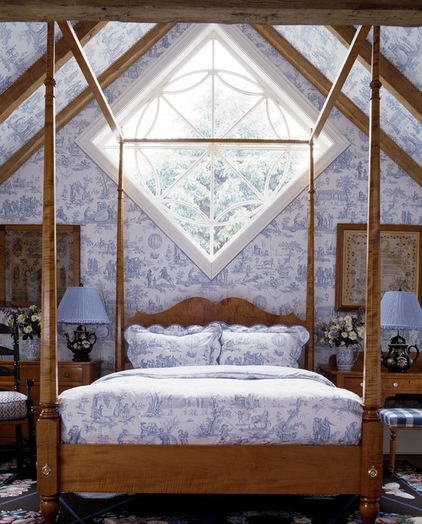
The word “toile” (pronounced “twahl”) as we use it today is actually a bit of a misnomer. “Toile” in French just means “fabric.” Toile de Jouy is the accurate name of this pattern, which was originally printed on fabric in the French town of Jouy. Its name became truncated somewhere along the way.
Toile was created in 1770 with the invention of copper plate engraving, which allowed for its characteristic fine detailing. Beforehand, white fabric was hand painted or printed with clunkier wood blocks. While single-color motifs on white are by far the most common, two-toned and dark-background toiles do exist.
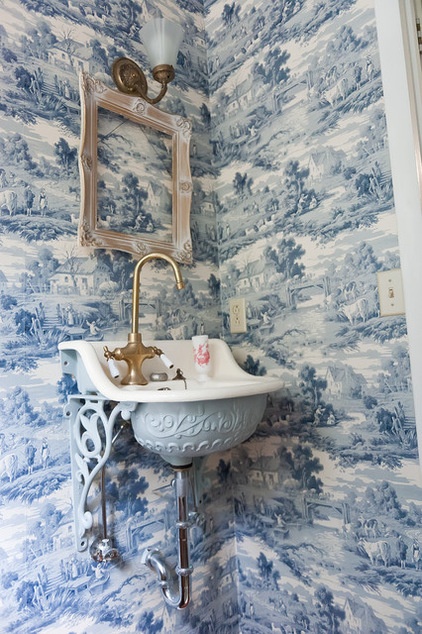
Toile tells a story. “Unlike other patterns, toile adds a story to your decor,” says Kristie Barnett of The Decorologist. “Toile scenes evoke nostalgia and can transport your imagination to another place or time. Toile almost always starts a conversation.”
While not all do, most toile patterns show scenes of something going on — a snapshot of some aspect of life. Some popular motifs feature bucolic countryside landscapes complete with farm animals, milkmaids and haymaking, like Barnett’s example shown here. Others may have an exotic focus with Chinese pagodas, umbrellas, tropical flora or idyllic classical allegories. There are some humorous contemporary takes available, too, like sketches of modern-day Brooklyn, New York.
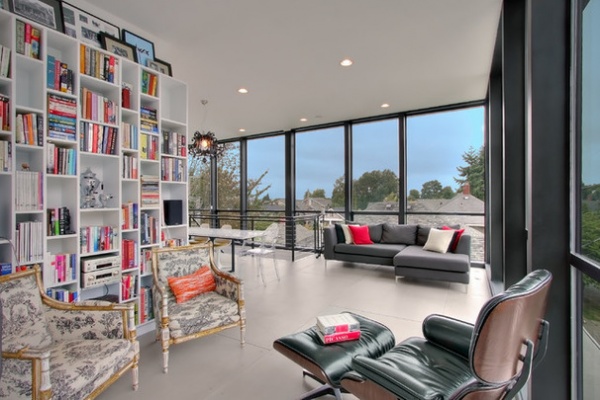
Toile works in surprising settings. While toile is a centuries-old creation, it works as well in contemporary settings as in formal ones. In the modern Seattle home seen here, a midcentury Eames lounge chair is paired with a duo of toile-covered bergères. Certainly, the more graphic black-on-white color choice helps in the blending of eras.
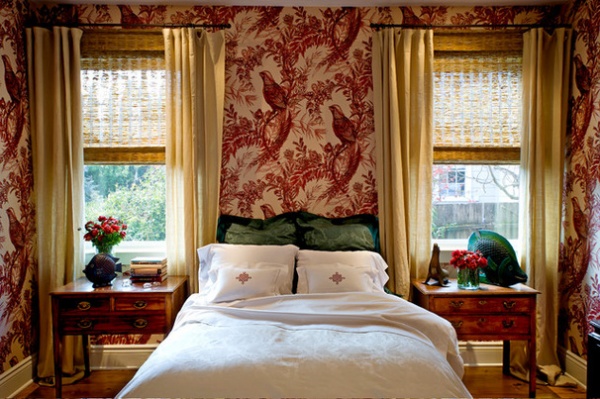
Toile can be the life of the party or soft-spoken. Depending on the particular pattern and color saturation, toile patterns can either be as soft as a whisper or as bold as a stop sign. You need to decide which effect you want to achieve. This bedroom design, by 38 Spatial, features a spirited red pheasant toile pattern that is the star of the room.
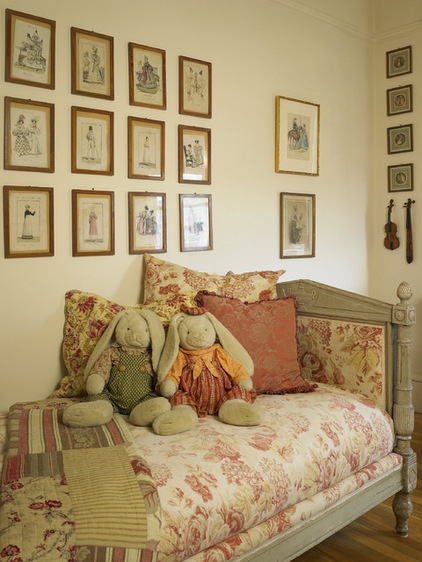
Meanwhile, the soft rosebud toile on this daybed adds a hint of pattern. Instead of engulfing the space in a busy design, the daintier toile lets the architecture of the bed frame and antique fashion prints overhead come to the forefront.
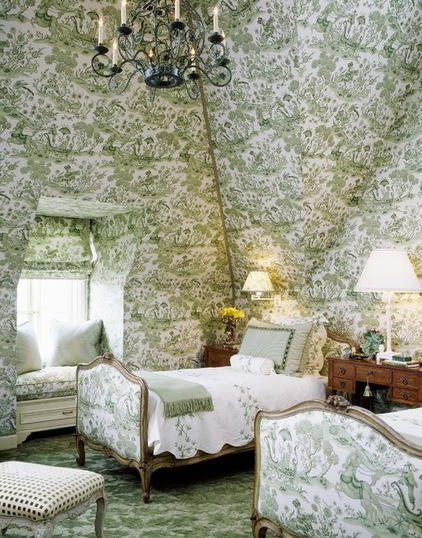
Toile works in large doses. While not everyone agrees that more is better, toile is unique in that it can work as an all-encompassing pattern.
This bedroom has the same green and white toile fabric upholstered on the towering walls, the window shade, the cushion and the beds’ headboards and footboards. Replicating this look with a stripe, for example, would be completely disorienting. While a prominent pattern, this toile installation still gives off a restful vibe.
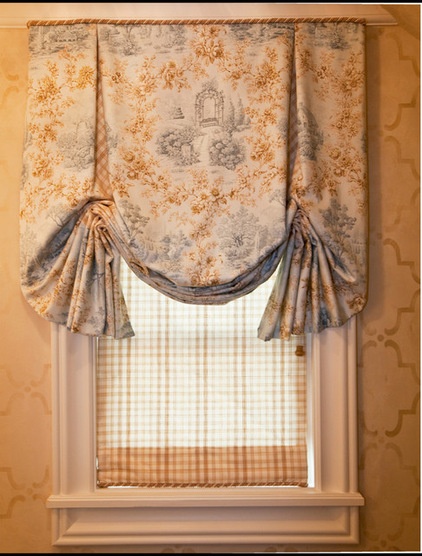
And it works in small doses. If the whole-room approach isn’t for you, using toile on a smaller component, like window treatments, is a good alternative. Because a toile pattern is sinuous and doesn’t have a strong directional design like a plaid or check does, it’s flexible in the shapes it can accommodate without the pattern’s becoming lost or distorted.
Toile looks super on simple pinch-pleat drapery panels as well as pieces with more complex shapes, like this relaxed Roman shade designed by LLB Traditional Design. The toile design reads just as well in the intricate folds as on the face of the shade.
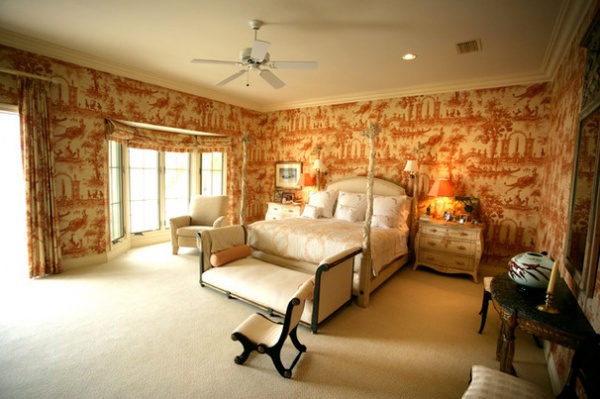
Consider your pattern size. Toile patterns tend to be on the larger side, which is why they’re often installed on walls. So before selecting a pattern, consider the room you’re planning to use the toile in and whether it’s appropriate.
The toile in this bedroom has a gargantuan repeat and looks to be about 84 inches in width. Designer Isabelle Formigé-Miller says this pattern was chosen because of the expansiveness of the room. While stunning here, it wouldn’t work in a small powder room.
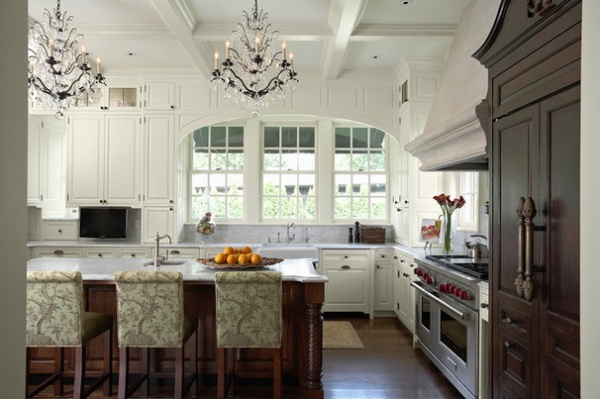
And if you’d like continuity. If you plan to use toile on multiple pieces next to one another, like window shades or chairs, you may want the patterns to align. This is especially true if the toile has a prominent motif.
These kitchen chairs are a perfect example. The tree-like shape on the backs of all the chairs is in the same location on each piece. To achieve this, you’ll likely need to order more fabric than what you’d need if using a different pattern. Your upholsterer will let you know how much to order depending on the size of your pieces, the fabric width, the repeat and whether you want to highlight a certain section in the motif or not. The additional yardage can sometimes be substantial, so be prepared. It’s imperative to have this discussion with your designer or upholsterer so everyone has the same expectations.
How to work with an upholsterer
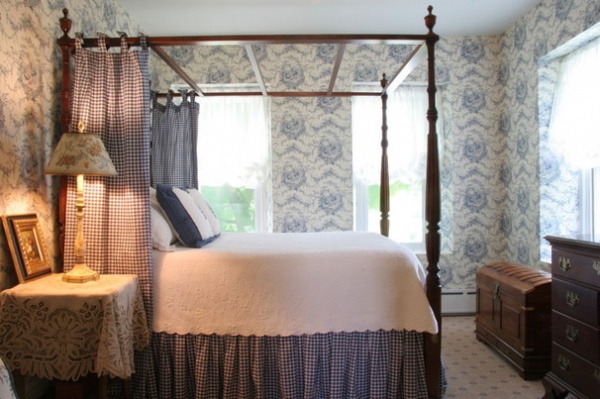
Get a good preview. It’s sometimes challenging to evaluate what a pattern will look like on the wall when thumbing through fabric or wall covering samples. A strong motif that may look like a spread-out pattern on the sample might read as stripey or blotchy once installed. In short, this type of toile motif makes more of a statement. Not that this is a bad thing; you just need to understand how the design will translate and whether it’s the look you’re aiming for. If you’re not sure about a pattern, see if you can find an image of the toile already installed or access a large-size sample and hang it on the wall.
This pretty toile wall covering has a distinct oval vignette motif that is apparent when viewed at a distance.
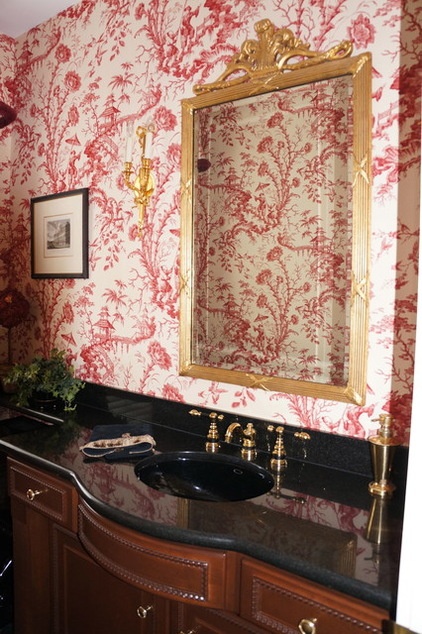
In comparison, this toile pattern has an all-over pattern that translates evenly over the surface. All-over toile patterns tend to have a more delicate, uniform appearance.
Another pattern to know: Buffalo check
Browse toile patterns and accessories in the Houzz Shop
Related Articles Recommended












